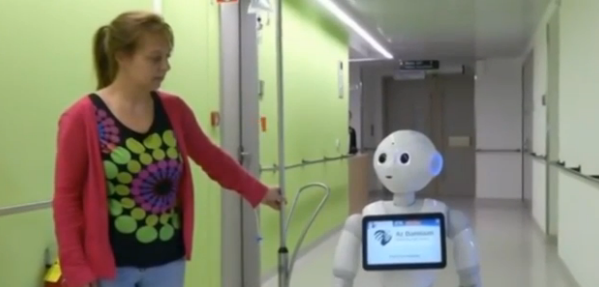Officials at the Fukushima Prefecture lack the technology necessary to locate and remove the missing melted nuclear fuel. But there may be hope. The Japan Atomic Energy Agency christened its new facility on Oct. 19 dedicated to developing technologies to decommission the reactors at the Fukushima No. 1 nuclear power plant.
The Naraha Remote Technology Development Center will conduct research on how to develop decommissioning technologies for the Fukushima power plant. Radiation levels remain too high for humans to locate and remove the missing nuclear fuel. Even state-of-the-art robots sent inside the reactors have been unable to withstand the radiation.
An estimated 105 people people attended the ceremony, including high-profile figures like Prime Minister Shinzo Abe, science and technology minister Hiroshi Hase and Fukushima Governor Masao Uchibori.(1)
“The decommissioning process is a lengthy one that will take up to 40 years,” Abe told sources. “This facility was set up to consolidate the world’s knowledge to face the unknown.”(1)
Simulating a nuclear catastrophe
The Naraha Remote Technology Development Center holds a life-sized replica of a damaged reactor and virtual reality system. The system will be used to test new machines designed to remove the nuclear reactor fuel.
The goal of the institute is to reduce the number of failed devices sent into the reactors in a quest to find the missing nuclear fuel. In other words, the technology center must weed through a scrap yard of failed robots in order to find one that actually works.
Among the new machines on the horizon is the scorpion robot, which is expected to be sent inside the No. 2 nuclear reactor at the power plant. In late September, researchers discovered that approximately 70 to 100 percent of reactor No. 2’s fuel had melted to its core. The Tokyo Electric Power Company (TEPCO), the company in charge of the power plant, sent sixteen robots into the crippled plant, all of which had difficulties withstanding the toxic radiation levels.(2)
The Naraha center plants to construct a life size model of the reactor suppression chamber residing beneath the containment vessel that was decimated by the 2011 tsunami. The containment vessel must be flooded with water in order to flush out the nuclear fuel inside. The researchers plan to use the life size replica to test new technologies intended to patch up the vessel in order to prevent leaks.
The virtual reality system projects onto a screen a virtual simulation of the space inside the nuclear reactors. No one is sure what the inside of the crippled nuclear reactors looks like. The virtual simulation is assembled by data collected from robots that were sent inside the reactors.
It was a one way trip for all the previous robots sent into the nuclear reactors. Most of them had a calculated life span of ten hours. Some robots couldn’t withstand the nuclear radiation for more than three hours before going off line.
Naraha Center juggles multiple projects
In addition to building cutting edge technology that can remove the missing nuclear fuel, the Naraha Center intends to develop methods that minimize the amount of radiation workers are exposed to. For the first time this year, a TEPCO worker was diagnosed with leukemia from radiation exposure at the Fukushima Prefecture.
The JAEA is also a building a facility in Okuma to keep track of amount of radioactive materials bound within the plant. The two JAEA facilities will cost approximately 85 billion yen ($711.4 million) to build.(2)
“There are still 100,000 people evacuated from the disaster,” Toshio Kodama, JAEA president, told sources. “We hope to fulfill the role the JAEA is meant to play in the decommissioning process.”(2)
Sources include:
(1) AJW.Asahi.com
(2) Rt.com




















